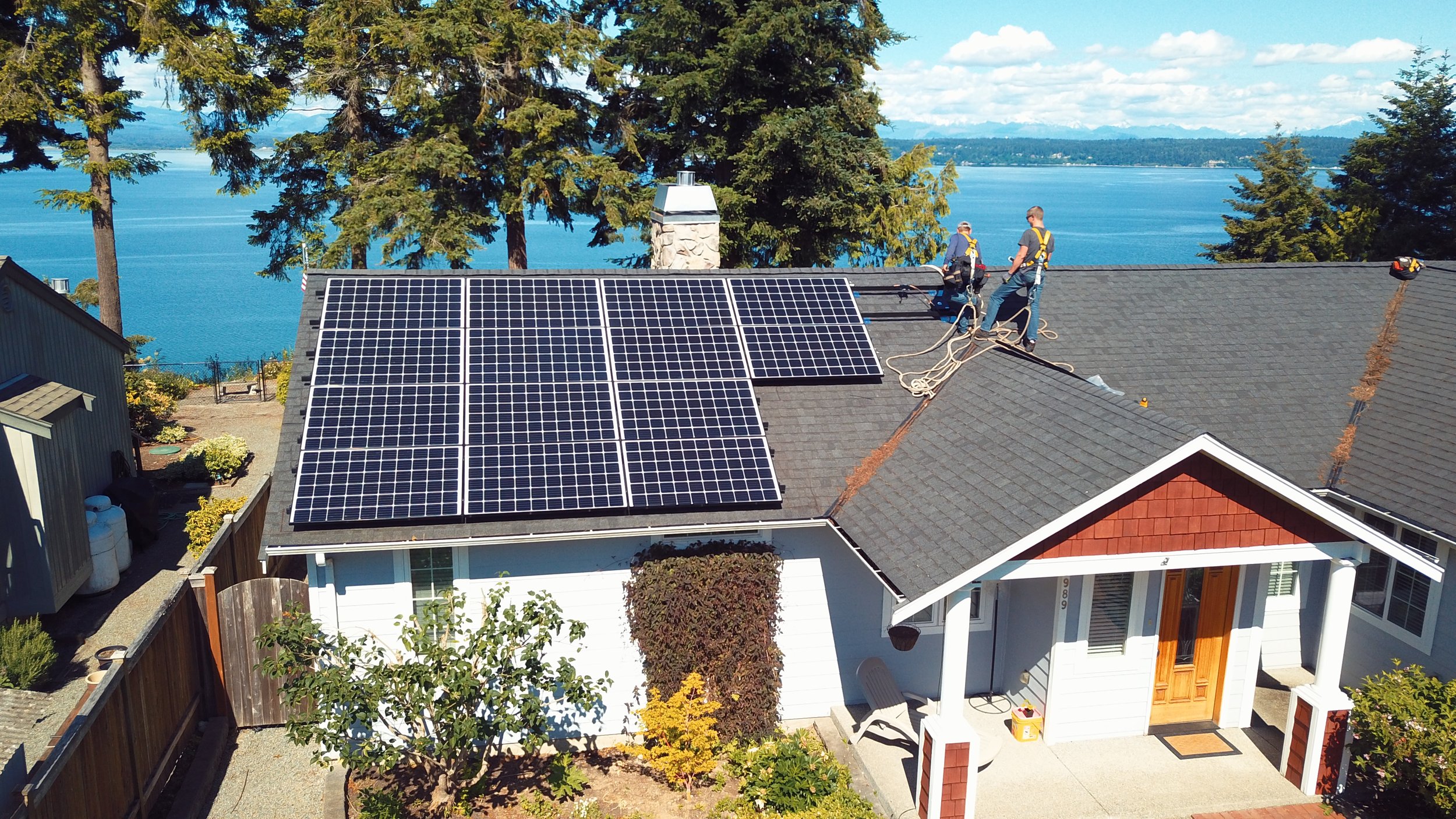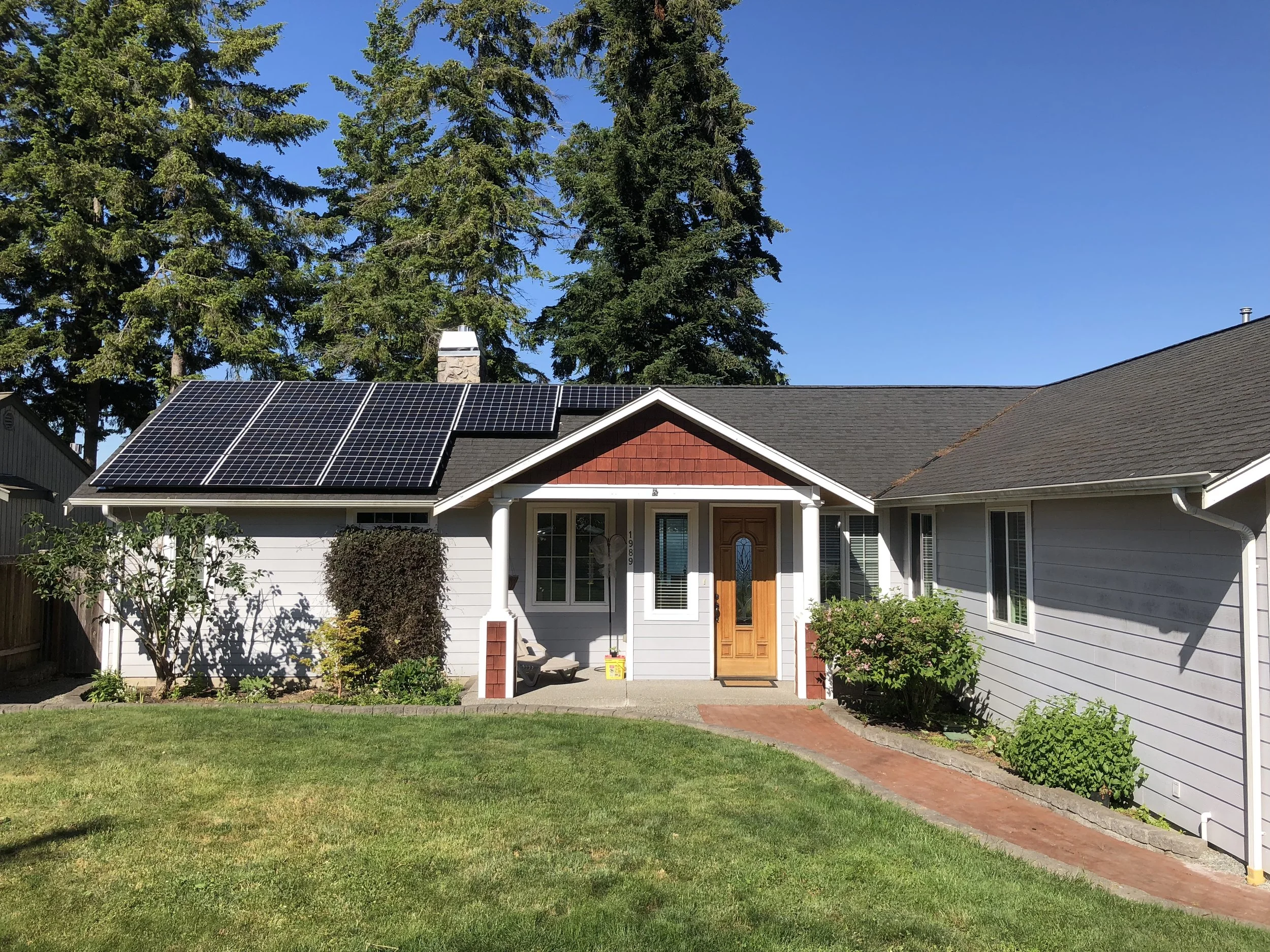
Solar in Camano Island, WA
This home has minimal electric consumption, thus, it does not need many solar panels to offset its electricity usage. How does that work? Let me begin by asking the pertinent questions: First, since the home uses most of its power early in the morning, in the evening and at night, how can solar, which produces its most during low usage times, offset its electrical consumption? Second, in a northwest winter, we get very little solar exposure, and electricity consumption is the highest, how does solar work then? Don't I need a battery to store energy so I can use my solar when there is no sun?
Those are great questions! Net Metering is the answer. Net metering is an agreement with the utility company, enforced by the state, requiring any electricity produced by the home and not used in the house will be used elsewhere by the utility and the utility must credit that originating home, at retail rates, of that excess production. This means that your solar production, when not used in the house, literally spins your meter backward. When you do draw power from the utility, while the solar is not producing as much as the house is consuming, it turns your meter forwards, and you only pay for the actual net "distance" the meter spun forward.
This agreement is on an annual cycle. That means that all of the excess power you make and do not consume in the summertime is credited back to your account in the wintertime when usage is up, and production is down.
When we analyze a home and design a solar system for net metering, our goal is to compare your total annual kWh (kilowatt-hour) consumption versus total annual kWh production from a solar system. With this method, we can reasonably offset your electricity costs by producing as much electricity as the house consumes over a year.
Two great benefits to this style of solar production are that your system is warrantied to produce for 25 years, and the home's net energy footprint is zero! Rising utility costs averaging 4% per year, which means a ton of savings on your electricity bill over the lifetime of the system.

